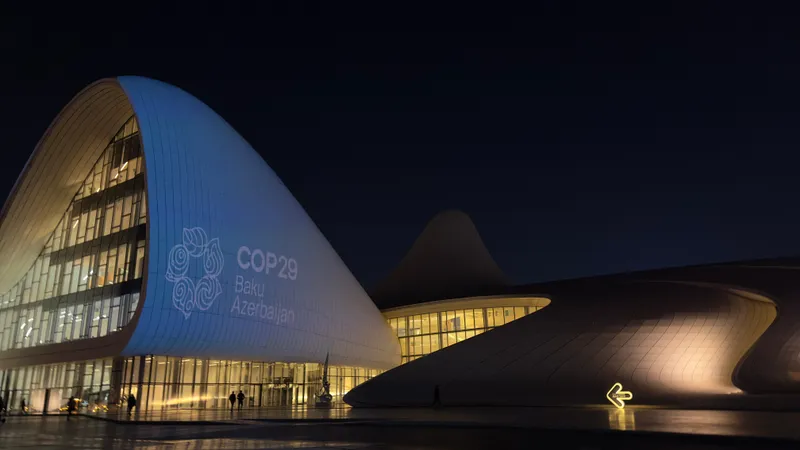NewsPerspectives
COP29 X WAM: Sustainable ambitions enabled through digital action and innovation

COP29 has marked a historic moment with the introduction of the first-ever ‘Digitalisation Day’ at a UN climate conference. This new addition reflects the growing recognition of technology’s role in addressing climate change. Building on initiatives introduced at COP28, this day emphasised both the opportunities and challenges associated with leveraging digital innovation for climate action.

COP29 Declaration on Green Digital Action
Central to the day’s discussions was the unveiling of the COP29 Declaration on Green Digital Action. The declaration highlights the critical role of digital technologies in combating climate change, while also addressing their potential negative environmental impacts. It advocates for the adoption of innovative digital tools to reduce greenhouse gas emissions, improve energy efficiency, and support climate-resilient communities. The declaration also highlights the importance of building resilient digital infrastructure and mitigating the climate impact of digitalisation by promoting clean energy and reducing e-waste.
Key goals of the declaration include ensuring digital inclusion, particularly in developing nations, fostering innovation, and supporting data-driven decision-making. The declaration calls for global collaboration, with a focus on sharing best practices.
Brad Sara, Warren and Mahoney’s Digital Design Lead says the practice is passionate about using technology to unlock insights throughout the design process.
“Our tools give our teams superpowers to advance their knowledge of a project and rapidly test ideas and solutions.”
Below are three ways technology can enable action in the building and construction industry.

1.Technology enabling transparency and consistency
In any scenario when data is used to inform decision making, the two most important factors to get right are transparency and consistency.
Transparency is important, as disclosing emissions is critical to being able to evaluate the problem and setting up a strategy to mitigate emissions. Consistency is also essential, as one project needs to be comparable to another across a portfolio. Consistent assessments of emissions enable benchmarking possible and enable targets to be tracked each year.
The best way to set up a project for successful adoption of technology is through establishing a Carbon Brief and BIM Execution Plan at the beginning. A Carbon Brief will outline the key methodology requirements and deliverables at each design stage. A BIM Execution Plan will outline how technology will be used throughout the project to deliver on the carbon and project brief requirements.

2.Digital twins for resilient and efficient built assets
Digital twins, as virtual representations of physical assets, offer real-time data on energy consumption, resource efficiency, and the environmental impact of design decisions. This allows the building and construction industry to simulate scenarios, optimise operations, and plan for long-term climate resilience. Digital twins are not just a design tool – they’re a way to future proof our buildings, making them more energy efficient, resource conscious and adaptable to the challenges for climate change. At Warren and Mahoney, we’re using digital twins in projects like Heke Rua Archives New Zealand, providing powerful insights that set up the project for success.
Recognising the national treasures this project is entrusted with protecting, resilience is a core design driver. To achieve this, BIM is being used to foster communication, collaboration, and coordination across the project team utilising a full suite of advanced tools, including pre-emptive clash detection, digital prototyping of the complex seismic resilience, forecasting OPEX costs in design and developing ways to manage this project through a digital twin.

3.AI amplifying data-driven decision-making
Artificial intelligence (AI) is also revolutionising the building and construction industry by enabling predictive analytics and data-driven decision-making. From optimising construction processes and materials to enhancing the efficiency of building systems, AI fosters sustainable practices across the project lifecycle. It also supports climate adaptation by identifying vulnerabilities in infrastructure and integrating solutions to withstand extreme weather events.
However, AI is not entirely sustainable due to its large energy demands. According to KPMG, “By 2030, data centre energy demand due to AI will be roughly equivalent to the electricity consumption of Australia.” This raises an important question: How do we leverage AI to maximise its contributions to sustainability while addressing its energy footprint?
The answer lies in adopting energy-efficient AI models, investing in renewable-powered data centres, and prioritising applications that deliver maximum environmental impact. By striking this balance, the building and construction sector can harness AI as a tool for innovation and resilience while contributing to broader climate goals.

Designing for Sustainability
As we look to the future, the integration of digital technologies into climate action becomes increasingly vital. The insights shared at COP29 highlight the transformative potential of tools like digital twins and artificial intelligence, which empower the building and construction industry to drive sustainability, enhance energy efficiency, and build resilience in the face of climate change.
This is a pivotal moment—by embracing these innovations, the industry can lead the way in achieving global climate goals.
The opportunity is clear, we have the power to create a sustainable and resilient future for generations to come, and it starts with taking action today.
If you would like to learn more about the impacts that global climate policy could have on your organisation, we welcome you to reach out to Emily Newmarch to find out more.
